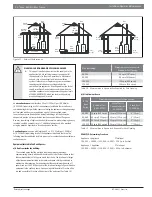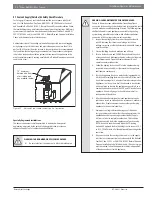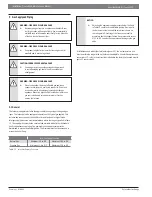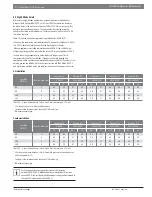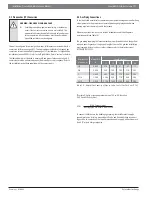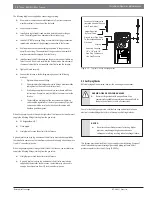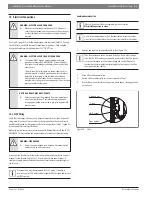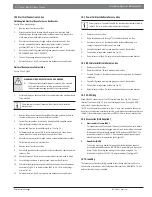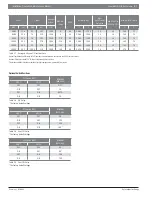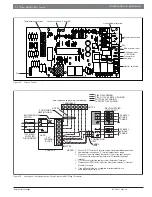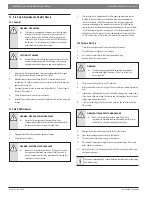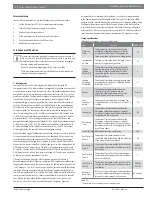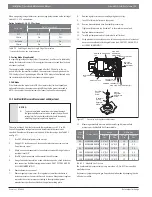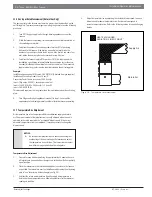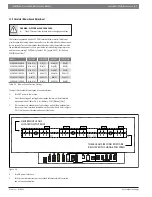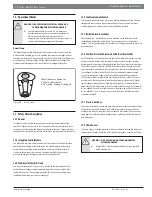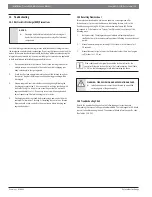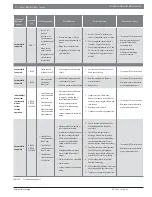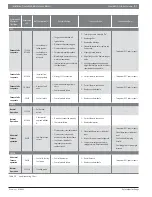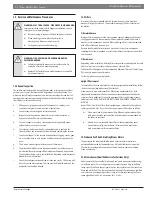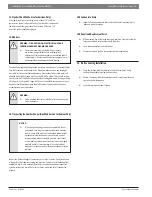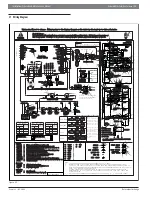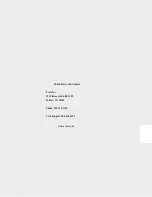
4 6 |
E
coer
96%
A
F
UE
Gas Furnace
Installation, Operation & Maintenance
07-2021
|
E
coer
I
nc
..
Data subject to change
11.6 Gas Input Rate Measurement (Natural Gas Only)
The gas input rate to the furnace must never be greater than that speci
fi
ed on the
unit rating plate. To measure natural gas input using the gas meter, use the following
procedure.
1.
Turn OFF the gas supply to all other gas-burning appliances except the
furnace.
2.
While the furnace is operating, time and record one complete revolution of
the smallest gas meter dial.
3.
Calculate the number of seconds per cubic foot (sec/ft³) of gas being
delivered to the furnace. If the dial is a one cubic foot dial, divide the
number of seconds recorded in step 2 by one. If the dial is a two cubic foot
dial, divide the number of seconds recorded in step 2 by two.
4.
Calculate the furnace input in BTUs per hour (BTU/hr). Input equals the
installation's gas heating value multiplied by a conversion factor (hours to
seconds) divided by the number of seconds per cubic foot. The measured
input must not be greater than the input indicated on the unit rating plate.
Example:
Installation's gas heating (HTG) value: 1,000 BTU/ft³ (Obtained from gas supplier)
Installation's seconds per cubic foot: 34 sec/ft³
Conversion Factor (hours to seconds): 3600 sec/hr
Input = (Htg. value x 3600) + seconds per cubic foot
Input = (1,000 BTU/ft3 x 3600 sec/hr) + 34 sec/ft³
Input = 106,000 BTU/hr
This measured input must not be greater than the input indicated on the unit rating
plate.
5.
Turn ON gas and relight appliances turned off in step 1. Ensure all the
appliances are functioning properly and that all pilot burners are operating.
11.7 Temperature Rise Adjustment
Air temperature rise is the temperature difference between supply and return
air. The proper amount of temperature rise is usually obtained when the unit is
operated at the rated input with the "as shipped" blower speed. If the correct
amount of temperature rise is not obtained, it may be necessary to change the
blower speed.
NOTICE:
An incorrect temperature rise can cause condensing in or
overheating of the heat exchanger. Determine and adjust
the temperature rise as follows. The temperature rise must
be within the range speci
fi
ed on the rating plate.
Temperature Rise Adjustment
1.
Operate furnace with burners
fi
ring for approximately 15 minutes. Ensure
all registers are open and all duct dampers are in their
fi
nal (fully or partially
open) position.
2.
Place thermometers in the return and supply ducts as close to the furnace
as possible. Thermometers must not be in
fl
uenced by radiant heat by being
able to "see" the primary heat exchanger (see Fig. 38).
3.
Subtract the return air temperature from the supply air temperature to
determine the air temperature rise. Allow adequate time for thermometer
readings to stabilize.
4.
Adjust temperature rise by adjusting the circulator blower speed. Increase
blower speed to reduce temperature rise. Decrease blower speed to
increase temperature rise. Refer to the following section for speed changing
details.
Figure 38
Return Air
Supply Air
HEAT EXCHANGER
RADIATION “LINE OF SIGHT”
Temperature rise measurement

